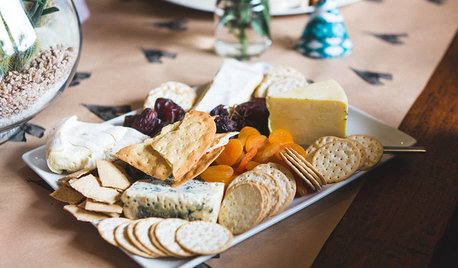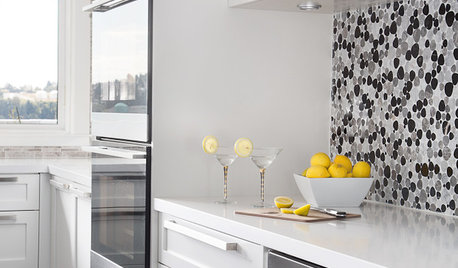What can I make with the cores of asian pears? Vinegar? Pectin?
NilaJones
10 years ago
Related Stories

EDIBLE GARDENSWhy Grow Quince? For Beauty, Fragrance and Old-Time Flavor
Delightfully perfumed fruit and lovely spring blossoms make this apple and pear cousin worth a spot in the garden
Full Story
ENTERTAININGSimple Pleasures: The Reimagined Potluck
Party guests can bring more to the table than just the food. Enlisting help with setup, decorations and drinks spreads the work and the fun
Full Story
GARDENING GUIDESLush, Foodie Abundance in a Small Urban Garden
This modest backyard garden provides its owner with fruit and vegetables all year round, thanks to an innovative low-maintenance approach
Full Story
REMODELING GUIDESWhen to Use Engineered Wood Floors
See why an engineered wood floor could be your best choice (and no one will know but you)
Full Story
ARBOR DAY8 Reasons to Plant a Great Tree
Beauty is its own reward, but the benefits of planting the right tree in the right place go way beyond looks
Full Story
KITCHEN DESIGNNot a Big Cook? These Fun Kitchen Ideas Are for You
Would you rather sip wine and read than cook every night? Consider these kitchen amenities
Full Story
GARDENING GUIDES6 Plants That Beat Butterfly Bush for the Wildlife Draw
It's invasive, a nonnative and a poor insect magnet. Check out these better alternatives to butterfly bush in the garden
Full Story

DECORATING GUIDESGet the High Style of Ebony Minus the High Price
Bring the elegance of a prized wood to your rooms with techniques that replicate the look for less
Full StoryMore Discussions






digdirt2
NilaJonesOriginal Author
myfamilysfarm
digdirt2
seysonn
theforgottenone1013 (SE MI zone 5b/6a)
myfamilysfarm
NilaJonesOriginal Author
theforgottenone1013 (SE MI zone 5b/6a)
seysonn
sleevendog (5a NY 6aNYC NL CA)
sleevendog (5a NY 6aNYC NL CA)
theforgottenone1013 (SE MI zone 5b/6a)
digdirt2
NilaJonesOriginal Author
seysonn
sleevendog (5a NY 6aNYC NL CA)
balloonflower
NilaJonesOriginal Author
NilaJonesOriginal Author
sleevendog (5a NY 6aNYC NL CA)
NilaJonesOriginal Author